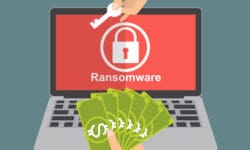Tapping Into Better Network and Physical Security with Tap Authentication
Tap authentication improves user convenience while helping align information security and safety for healthcare facilities.

Tap authentication offers a convenient access control alternative to keypads.
Tapping Reduces Reliance on Passwords
The tap authentication model reduces the need for complex passwords and diminishes password fatigue in healthcare environments that can require 20 or more logins each day in order to access enterprise data and services. With tap authentication, users can authenticate to multiple apps and services on multiple endpoint devices without having to recall and re-type additional codes and passwords. This model also makes it easier for users to leverage a single smart card to seamlessly access data, login to cloud resources and open doors.
Tap authentication is particularly attractive for mobile device users. In today’s mobile-first world, employees expect access to corporate cloud applications, data and services anywhere, at any time, from their preferred mobile device. This anywhere, anytime access can potentially make corporate networks more vulnerable to security breaches, significantly impacting their top and bottom lines. Reliance on passwords alone is also dangerous. When hackers steal an employee’s user name and password, they can then often move through the network undetected and upload malware programs to other systems. Tap authentication solves these security problems.
The 3 Steps of Tap Authentication
1. Users open a browser on their NFC-enabled device and then type the application URL they wish to access
2. They enter their corporate username and password
3. They tap their access control card to the back of their NFC-enabled mobile device or tablet to provide the second authentication factor. After users tap their card to one of these devices to authenticate to a network, the OTP is unusable. There are no additional tokens to deploy and manage, and users have only one item to carry – their smart card – and no longer must remember or type a complex password.
Implementation Is Straight Forward
Today’s tap authentication solutions are cloud-based and don’t require any onsitehardware to install or service contracts to maintain. IT deployment is a simple process of installing authentication system software and device apps, synchronizing users with the authentication cloud service and notifying them when they can begin using the system. Organizations should also have the option of deploying conventional card readers in areas where endpoints do not have built-in NFC readers.
There are other considerations for most effective deployment. User authentication is one of five security layers that every organization should consider. The other layers include authenticating the device, protecting the browser, protecting the application and finally authenticating the transaction with pattern-based intelligence for sensitive transactions. Implementing these layers requires an integrated, versatile authentication platform with real-time threat detection capabilities. This platform, combined with an anti-virus solution, provides the highest possible security against today’s threats.
Healthcare organizations can also consider storing biometrics on the smart card. With biometrics, users can reliably authenticate themselves with the simple touch of a finger, enabling them to log into multiple applications while providing an irrefutable audit trail.
Future Looks Bright for Tapping
The healthcare industry is moving toward converged solutions that can be used to secure access to everything from doors to computers, data, applications and cloud-based services. Tap authentication helps take another key step in that direction. Users already carry a smart card that replaces mechanical keys. Now the same card used to open doors can also replace dedicated OTP solutions, and a simple tap of a single card is all that is needed for both applications.
Tap authentication also offers the benefit of operating in an access control system ecosystem that can flexibly scale and adapt while delivering growing value to the organization. Hospital administrators can be confident that today’s system investments will be preserved as they grow, evolve and continually improve their security capabilities to combat ever-changing threats to their facilities, informati
on security and patient information privacy.
Tim Phipps is vice president of product marketing and identity assurance for HID Global.
If you appreciated this article and want to receive more valuable industry content like this, click here to sign up for our FREE digital newsletters!
 Leading in Turbulent Times: Effective Campus Public Safety Leadership for the 21st Century
Leading in Turbulent Times: Effective Campus Public Safety Leadership for the 21st Century
This new webcast will discuss how campus public safety leaders can effectively incorporate Clery Act, Title IX, customer service, “helicopter” parents, emergency notification, town-gown relationships, brand management, Greek Life, student recruitment, faculty, and more into their roles and develop the necessary skills to successfully lead their departments. Register today to attend this free webcast!













